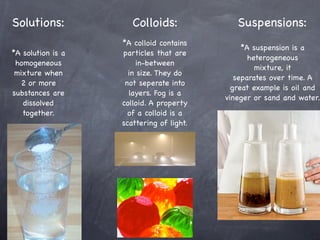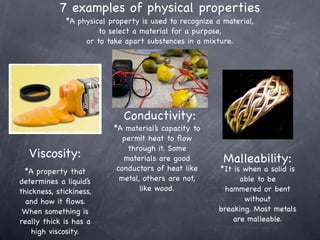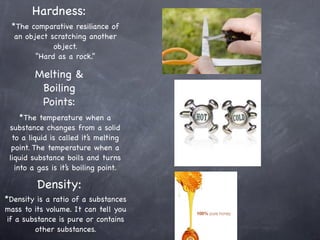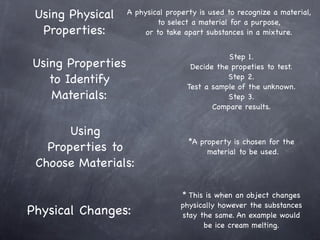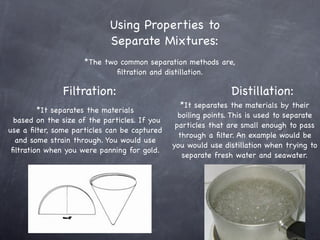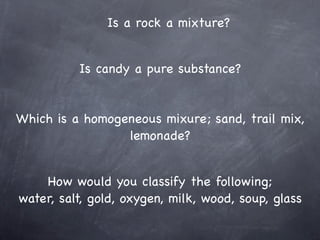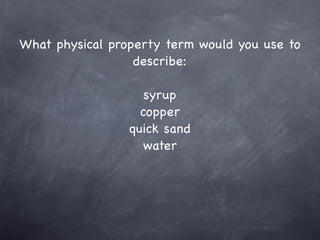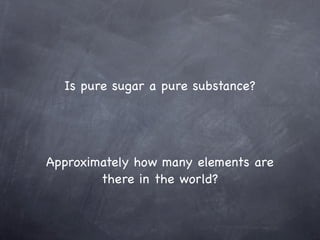This document provides information about matter and its properties. [1] Matter is anything that takes up space and has mass, and can be made of one or more types of atoms. [2] Pure substances have uniform composition, while mixtures have varying compositions made of two or more substances mixed together. [3] Physical properties, such as density, hardness, and melting point, can be used to identify materials, select materials for purposes, and separate substances in mixtures.


